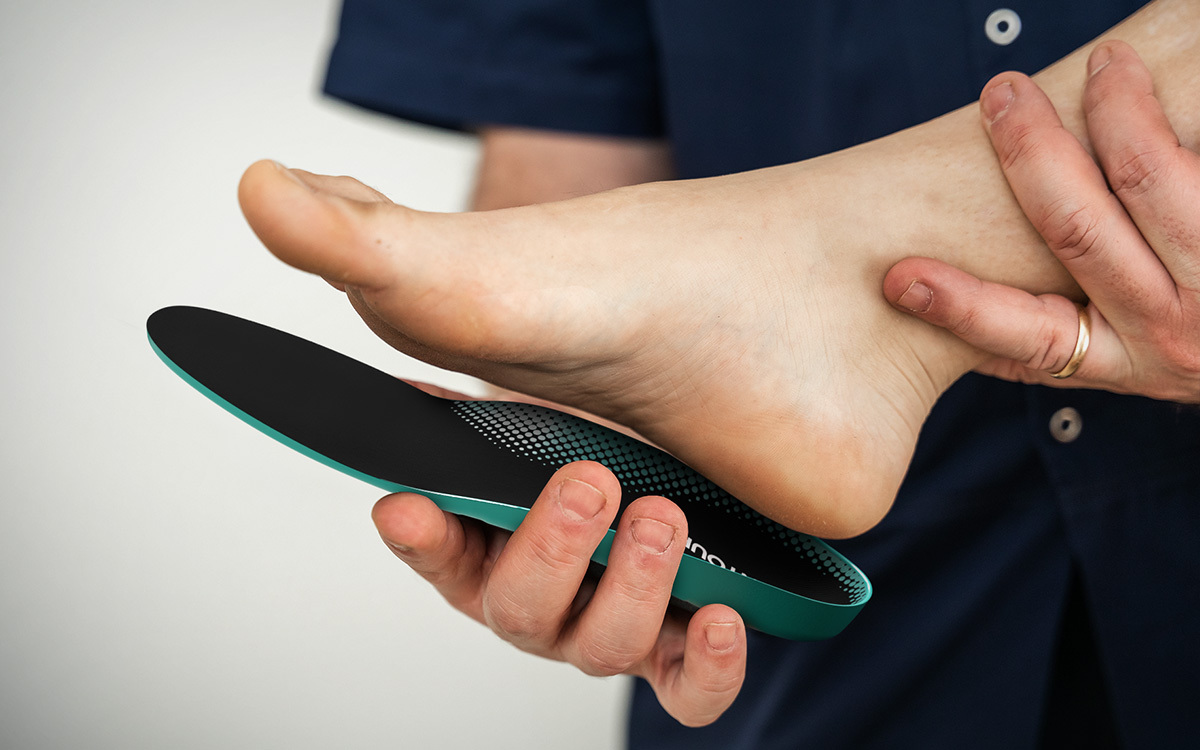Why Footwear Brands Are Investing in the Insole Experience
Footwear should be experienced – and footwear experience design trends include a thoughtful insole selection to ensure comfort, performance, and support.

There are hundreds of online searches each month related to foot arch pain – and some of those could be your customers, looking for answers to a problem that could be improved, helped, or alleviated by dynamic arch support insoles.
Everyone’s foot is different, and the foot arch is one area where those differences are palpable. Your customers may have low, moderate, or high arches, and many of them are wearing shoes that don’t properly accommodate their particular arch height.
The biomechanical differences among each arch height require different things from footwear and insole design, which can be hard for footwear designers and developers to achieve with a single shoe.
However, insoles that provide dynamic arch support can provide those benefits across the board, all in one shoe.
Read More: The Importance of Insoles with Arch Support
Before we discuss dynamic arch support insoles, let’s talk a little bit about the challenges of satisfying different foot arch types with a standard insole, and the concerns individuals have about arch pain.
Low arches typically cause overpronation, as all or most of the bottom of the foot touches the ground when standing. The longer individuals overpronate, the flatter their low arches can become, which puts these people at greater risk for conditions like bunions, plantar fasciitis, and different types of heel pain.
Moderate arches, often thought of as “normal” arches, are considered the most biomechanically efficient, as the shape of the arch is better able to support the body’s movement and pronate properly under weight. However, individuals with moderate arches can still develop common foot pain issues in the heel or ball of the foot. Improper insoles can contribute to the development of these issues.
High arches cause the impact from the body’s movement to fall on the heel and forefoot, as high arches are unable to help evenly distribute weight across the foot and provide additional support. For this reason, individuals with high arches often suffer from heel pain, leading to conditions like plantar fasciitis or achilles tendonitis, and pain in the balls of the feet, leading to a painful inflammatory condition called metatarsalgia.
Given the potential foot pain issues associated with arch height, we can’t stress enough the important role of dynamic arch support in footwear.
True to its name, dynamic arch support is able to accommodate the full gait cycle during any type of activity.
INSITE develops insoles with dynamic arch support using biomechanical science to understand foot movement with the lowest possible arch all the way to the highest possible arch, applying testing data to develop an insole that provides structure for the arch of the foot and support for full-range heel-to-toe motion.
How do dynamic arch support insoles do what they do so well?
And dynamic arch support doesn’t just help people with low or high arches, or who are suffering from pain caused by their arches.
Dynamic arch support is helpful for anyone who stands for a long period of time, who pronates or supinates when walking or running, or who has an existing injury and needs additional support to accommodate it.
Using INSITE insoles in your footwear line ensures you’re delivering the benefits of dynamic arch support to your customers with every pair of shoes you make. Even those customers who are not experiencing foot pain or have arch issues will appreciate the added support.
Footwear should be experienced – and footwear experience design trends include a thoughtful insole selection to ensure comfort, performance, and support.
How do you strike a balance between sustainability and performance when it comes to footwear materials? INSITE® Director of Research & Design Justin Ter Har recently answered this question at the FDRA Sustainability & Innovation Summit in Portland, OR in September.
Orthotics have many benefits, and orthotic-inspired insoles allow footwear brands to deliver those benefits right out of the box.